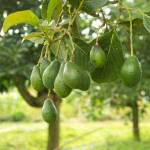
 Meru county is an agricultural basket that provides a high volume of export horticulture and subsistence food in Kenya. The county’s location at around five thousand feet above sea level on the footsteps of Mount Kenya makes it ecologically served with good climate. The main crops that the locals grow include potatoes, maize, sorghum, millet and wheat, alongside barley. Export crops include coffee, tea, avocados, tomatoes, cabbages and bananas. Lucrative sources of income include khat, although the stimulant plant enjoys perennial bans. Other sources of income are Asian vegetables like okra and tarragon.
Meru county is an agricultural basket that provides a high volume of export horticulture and subsistence food in Kenya. The county’s location at around five thousand feet above sea level on the footsteps of Mount Kenya makes it ecologically served with good climate. The main crops that the locals grow include potatoes, maize, sorghum, millet and wheat, alongside barley. Export crops include coffee, tea, avocados, tomatoes, cabbages and bananas. Lucrative sources of income include khat, although the stimulant plant enjoys perennial bans. Other sources of income are Asian vegetables like okra and tarragon.
Here is a look at four substantially important exports from Meru:
Banana: in Kenya, the chief areas of all types of bananas including Cavendish and Green banana are Western, Eastern, the Coast and Central. From Eastern, Meru and Embu are the largest sources. In Meru, bananas thrive in mainly South Imenti, Tharaka Nithi and Igembe. The fruit grows most of the year and is available in green and ripened forms.
Farmers do their marketing mostly through traders who come to their farms during harvesting. Though there is an emerging trend of SME export companies, the bulk of the traders of bananas are brokers. At least 15 to 30% of banana produce in Meru is lost during post-harvesting due to excess supply, lack of a ready market and poor storage. The crop attracts inspection by the Ministry of Agriculture officials when it is bound out of the country but the produce small growers sell in local markets rarely undergoes similar inspection.
Avocado: Most of Kenya avocados thrive in Central and Eastern provinces which provides 70 percent of the supply. Meru is one of the biggest producers in Kenya and the leader in Eastern province in export tonnage. The crop grows between 1000 and 200 meters above sea level especially Hass and fuerte, while other varieties like Puebla do well in the ranges above 2500 meters in the county.
Soghurm: The hardy crop thrives in Meru and the neighboring Tharaka-Nithi. In the two regions, sorghum has the status of being the number five cereal in terms of importance after wheat, maize, millet and rice. Farmers have been growing the perennial staple in maize fields for generations, mainly for subsistence use. Recently, family growers have expanded into value addition by sale of soghurm to local industries to make such enriched products as biscuits, porridge flour, sausages and even beer in local breweries.
Vegetables: In 2012, Meru was on top of the list for vegetables of all types in Kenya and it has not relinquished the title. The main vegetable is tomato of which the county supplies a substantial margin of the KSH39 billion worth of the yearly nationwide needs. Potato is the major tuber that grows in Meru and the country also provides a high stake of the KSH28 billion market value of the crop in Kenya. Cabbage also thrives in Meru as a cash crop alongside tomatoes and even outstrips the latter in times of demand. Asian vegetables including okra and tarragon have also found their place in the county due to land-leasing systems that allow experimental farming. Legumes ranging from common beans to major exports like French beans are also in high supply in Meru.
Therefore, if you need a supply of banana, avocado, vegetables or grains any time of the year, Meru is the place to go. Among other reasons for its growth is its vibrant vegetable and other fresh produce market that sometimes exceeds that of Nairobi. Even for the rare value added crops like sorghum, the county should be a top sourcing venue for your imports.

